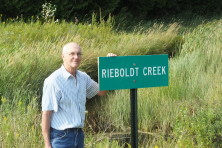Editor’s Note: We Can’t Destroy ‘It Was,’ Only Correct What Is
- Share
- Tweet
- Pin
- Share
People across the country want to destroy contentious symbols of America’s past – monuments to Confederate soldiers, statues of Christopher Columbus, bronzes of controversial politicians, flags, the names of forts, lynching trees. All are being viewed as physical manifestations of our country’s history of oppression and racism.
I wouldn’t argue that they’re not that. I would ask what wielding a hammer or torch to that history does to right the wrong.
We don’t destroy the evidence at crime scenes. We don’t burn the house down when we discover termites. When historic emblems lie in ruins or ashes at our feet, what has really been accomplished? We haven’t moved backward to right history. That’s impossible. As Nietzsche said, “It was” is man’s immovable stone. Yet that’s what people are trying to do: crush “It was,” inflamed by wrath or displeasure or revenge at our inability to go backward.
I witnessed this in action when I was a volunteer grant writer helping to preserve what had been the superintendent’s house at the Pipestone Indian Boarding School. It was the only remaining building where 60 had once stood, and where once up to 400 children at a time had been “educated” under what we now recognize as an inhumane and oppressive system.
My first grant paid for the assessment of the structure; the second paid for the final architectural drawings and schematics. When it came time for the actual rehabilitation of the building’s exterior envelope, however, I ran up against passionate and heated arguments about whether such a place deserved to be renovated.
Our point – and the ‘our’ included Native Americans – was to preserve the building so we could use it to interpret the past against current knowledge, values and beliefs. To educate people about what really happened there. To allow a place of healing for the thousands of children and family members who had suffered, and who continue to suffer, from that system. This is not unlike why the Auschwitz-Birkenau Memorial and Museum exists today, including the remains of gas chambers and crematoria.
The grants board decided my grant could not see past the building’s symbolism, however, and it became emblematic of the blight the Indian boarding school system had cast upon this country’s history generally, and Minnesota’s specifically.
Destroying symbols doesn’t rid this nation of its oppressive and racist past, nor does it cure oppression and racism in the present. I’d be the first to take up a sledgehammer if it did. We can’t change what was, but we can change what is. Passion is helpful to draw awareness to these injustices, but a deep knowledge of where they’ve lodged – and dogged persistence in prying them out – are required to effect long-lasting and meaningful change.

